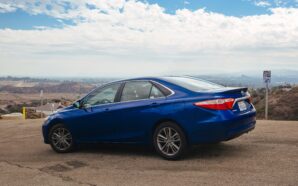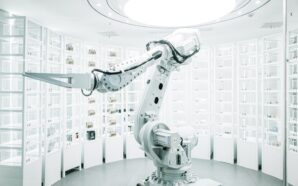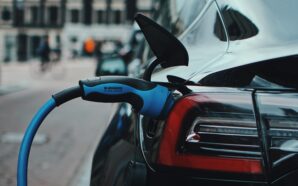

(Photo: Peter DaSilva for The New York Times)
Hydrogen fuel cars competing against electric vehicles
Looking into the future of the automotive industry is turning away from fossil fuels and focusing more on sustainable forms of fuel. The one auto brand known for looking into the future of the automotive industry is the luxury electric car company, Tesla, that is beating out their less sustainable competition but this could all change with the development of the hydrogen car.
Many think the fuel of the future is electric thanks to Tesla but hydrogen is proving to be a better sustainable fuel option. Water is one of the most abundant resources on Earth and offers a smaller carbon footprint for fuel and emissions.
Utilizing hydrogen as a fuel is a better option for the environment and the only byproduct is water, which is set to compete against battery-powered vehicles. Hydrogen fuel cell technology has long been researched and debated with the founder of Tesla, Elon Musk mocking the technology calling it “mind-bogglingly stupid” and “fool cells.”
#Korea to produce 6.2 million hydrogen cars by 2040#hydrogencar #fcev https://t.co/ubkT8S4FBI
— The Korea Herald (@TheKoreaHerald) January 17, 2019
It seems that Musk is mocking this technology to promote his battery-powered electric vehicles but other automakers are seeing the promise in this new development.
Battery electric vehicles (BEVs) are the electric vehicles that are more common including Teslas, using a battery to store electricity and power the electric motor. A hydrogen fuel cell electric vehicle (FCEV), like the Toyota Mirai, combines hydrogen with oxygen to produce electricity that powers the electric motor that drives the car.
People don’t want to buy electric cars like Tesla for a couple of reasons including taking too long to charge, having a limited range before needing to be recharged, and they have a much higher price than competition gas-powered vehicles. The hydrogen car can help to solve many of these issues to compete against other forms of fuel for cars.
When charging a Tesla at a supercharging station, a Tesla can charge 30 to 50 percent within 15 minutes meaning you have to stay at a charging station for over an hour for a full charge. Cars with hydrogen fuel cells don’t require charging at all, working more like a gas-powered vehicle the hydrogen tank is refilled at a hydrogen station in less than 5 minutes.


(Photo: driving.co.uk)
FCEVs don’t store electricity like a battery, they create the electricity on demand to power the motor which also helps to increase the range compared to Tesla. The range for FCEVs on the market is much longer that can be seen in the models including the Toyota Mirai (312 miles), Honda Clarity (360 miles), and Hyundai Nexo (380 miles).
Most BEVs have ranges limited to below 250 miles including the Chevy Bolt (259 miles), Kia Niro EV (239 miles), and Nissan Leaf (226 miles). Tesla models have the longest range of all BEVs with the Tesla Model S (373 miles) and Model 3 (322 miles) but often are too high in price for average car buyers.
FCEVs need more competitive pricing with the average cost of hydrogen fuel cell model of $60,000 and is around $20,000 more than entry-level BEV models. The reason for the high price is that production quantities are incredibly low with only a few thousand or hundred units made every year but automakers are looking to increase the production FCEV models.
Toyota has increased its production capability tenfold in the goal of being able to put more FCEVs on the market at a more competitive price. One of the biggest challenges with utilizing hydrogen fuel cells in vehicles is the lack of infrastructure with a majority of hydrogen fuel stations located in California with 44 hydrogen stations compared to over 1,600 Tesla charging stations.


(Photo: Toyota)
The automotive industry is looking to create more hydrogen stations to be able to support more people driving FCEVs and is slowly making progress to provide more fuel stations. Experts in the automotive industry are working with fuel suppliers and state regulators to make fuel stations that can offer all fuels in one location to better supply drivers.
With the growing popularity of FCEVs, Tesla will have to make a couple of changes to compete against this new technology by decreasing recharge time and price. The problem with increasing the range of a BEV is that the automakers would have to house a bigger battery to store more power. According to the law of diminishing return, adding more weight to the car after a certain point the added weight no longer yields additional range to compensate for the weight.
Tesla’s Donation Of Ventilators Backfires
-
America’s Favorite Car, the Camry, Takes a Green Turn with Hybrid-Only 2025 Model. In a groundbreaking announcement, Toyota, the...
-
Rishi Sunak stresses the need for external control in managing AI risks at the AI Safety Summit. UK Prime...
-
Tech Billionaire Proposes Renaming Wikipedia to ‘Dickipedia’ in Exchange for Record Donation In a recent social media spectacle, tech...
-
A recent investigation by the Wall Street Journal has exposed Instagram’s alleged involvement in facilitating illegal activities, particularly concerning...
-
NASA is seeking public help with the Daily Minor Planet project. The Daily Minor Planet Project is a...
-
The rise of electric vehicles (EVs) has been a hot topic for the last several years, but what is...
-
If you remember the classic story of Alice in Wonderland, you probably remember the part where Alice stumbles upon...
-
While Pokemon Go is a social game first and foremost, it can be a little difficult to communicate and...
-
In its more recent seasons, Fortnite has gotten steadily more ambitious with its use of NPC characters. Long gone...
-
As any Fortnite player can tell you, Fortnite is a game with a heavy emphasis on motion. You gotta...
-
If there’s one classic Disney movie that got kids interested in the wildlife of Africa, it was The Lion...
-
Throughout Coffee Talk’s cast of humans and humanoids, one of the major standouts is Neil, a mysterious alien lifeform...



















